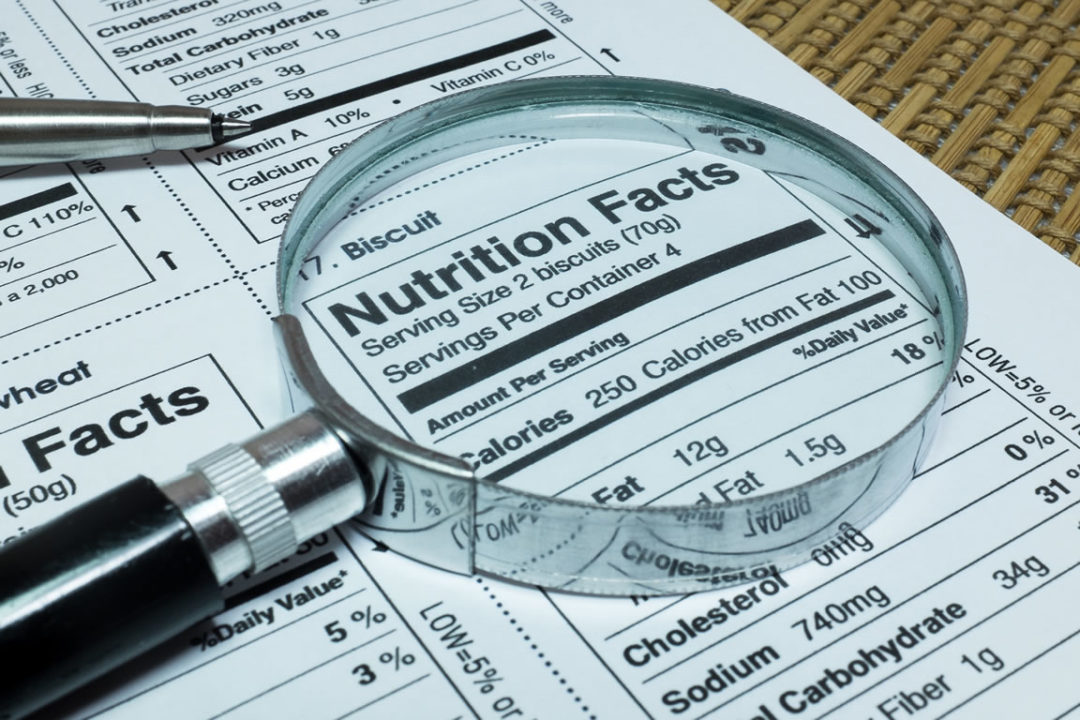
Getting to Know the New Nutrition and Supplement Facts Label Changes

A Refreshed DesignWhile the iconic look of the label will remain the same, updates have been made to ensure shoppers have ample information to make informed decisions about the foods they eat. One of these changes included increasing the type size for “Calories,” “Serving size,” and “Servings per container” declarations. Additional changes include: • Bolding the numbers of calories and “Serving size” declaration. • Changing the footnote to better explain the percent Daily Value (DV). It will now read: “The % Daily Value tells you how much a nutrient in a serving of food contributes to a daily diet. 2,000 calories a day is used for general nutrition advice” (1). • Manufacturers must also declare the percent and actual amount of the Daily Value for calcium, iron, potassium, and vitamin D, but can voluntarily declare the gram amount for other minerals and vitamins.
Information about Nutrition ScienceScientific evidence presented in the 2010 and the 2015-2020 Dietary Guidelines for Americans, supports reducing calorie intake from added sugars. According to the scientific data, “it is difficult to meet nutrient needs while staying within calorie requirements if you consume more than 10 percent of your total daily calories from added sugars”(1). To help increase consumers awareness of how much sugar has been added to products, the final rule will require a percent Daily Value and a declaration of grams, “Includes X g Added Sugars,” to be included under “Total Sugars” for “Added Sugars.”
While “Total Fat, “Trans Fat” and “Saturated Fat” will still be required on labels, “Calories from Fat” will be removed due to research suggesting that more important is the type of fat rather than the amount.
The list of nutrients is also being updated. Vitamin A and C, which was lacking in American diets in the early 1990’s, will no longer be required due to a deficiency in the general population being rare (1). Calcium and iron will remain and vitamin D and potassium will now be required due to a nationwide food consumption survey, which suggests Americans don’t always get enough of these nutrients, the lack of which is associated with an increased risk of chronic disease (1).
Daily values, the reference amounts of nutrients that are used to calculate the % DV that manufacturers include on labels, are being updated for nutrients like dietary fiber, sodium and vitamin D to reflect new scientific evidence from the Institute of Medicine, which was used in developing the 2015-2020 Dietary Guidelines for Americans.
Serving Sizes and Labeling RequirementsThe Nutrition Labeling and Education Act requires serving sizes to be based on the amount of food and beverages shoppers are actually eating, but since the last serving size requirements have not been changed since being published in 1993, some serving sizes will now increase and others will decrease. The reference amount used to set a serving size of soda was previously 8 ounces and will now change to 12 ounces (1). The reference amount for yogurt will now decrease from 8 ounces to 6 ounces (1).
Package sizes will also change. Due to shoppers being able to consume a package that is between one and two servings in one sitting, such as a 20 ounce soda or a 15-ounce can of soup, calories and other nutrients will now be labeled as one serving (1).
Manufacturers will also need to provide “dual column” labels for certain products, such as a 24 ounce bottle of soda or a pint of ice cream, that are larger than a single serving, but could be consumed in one or multiple sittings. “Dual column” labels will indicate the amount of calories and nutrients on both a “per serving” and a “per package”/”per unit” serving.
Supplement Facts LabelSimilar to the Nutrition Facts label for package foods, the Supplement Facts label will no longer require calories from fat, vitamin A, or vitamin C to be declared. The Supplement Facts label will instead require added sugars, potassium and vitamin D. “Sugars” will also be replaced with “total sugars” and the order of minerals and vitamins listed will also be changed. The Daily Values will also be updated and a footnote will be required for certain products “represented or purported” for the use of children 1 to 3 years of age. Unlike the Nutrition Facts label, the calorie declaration on the Supplement Facts label will not be as prominent as on the Nutrition Facts label because many dietary supplements do not contribute a significant amount of calories to the diet (2).WF
References1. U.S. Food and Drug Administration, “ Changes to the Nutrition Facts Label,”http://www.fda.gov/NewsEvents/Newsroom/PressAnnouncements/ucm502182.htm, accessed Dec. 2, 2016. 2. U.S. Food and Drug Administration, Industry Resources on the Changes to the Nutrition Facts Label,” http://www.fda.gov/ Food/GuidanceRegulation/GuidanceDocumentsRegulatoryInformation/LabelingNutrition/ucm513734.htm, accessed Dec. 2, 2016.
Published in WholeFoods Magazine January 2017

The editorial team at WholeFoods Magazine has decades of experiences reporting on natural products industry news, trends, and more. This national, monthly business-to-business magazine has been published continuously for nearly 40 years (the magazine was founded in 1977, and has been owned by Wainer Finest Communications since 1984). It is the longest-tenured media outlet of its kind in the natural products industry. The editorial focus at WholeFoods Magazine is, and always has been, on informing and educating members of the natural products industry.
The Magazine
Information
About Us
NOTE: WholeFoods Magazine is a business-to-business publication. Information on this site should not be considered medical advice or a way to diagnose or treat any disease or illness. Always seek the advice of a medical professional before making lifestyle changes, including taking a dietary supplement. The opinions expressed by contributors and experts quoted in articles are not necessarily those of the publisher or editors of WholeFoods.







